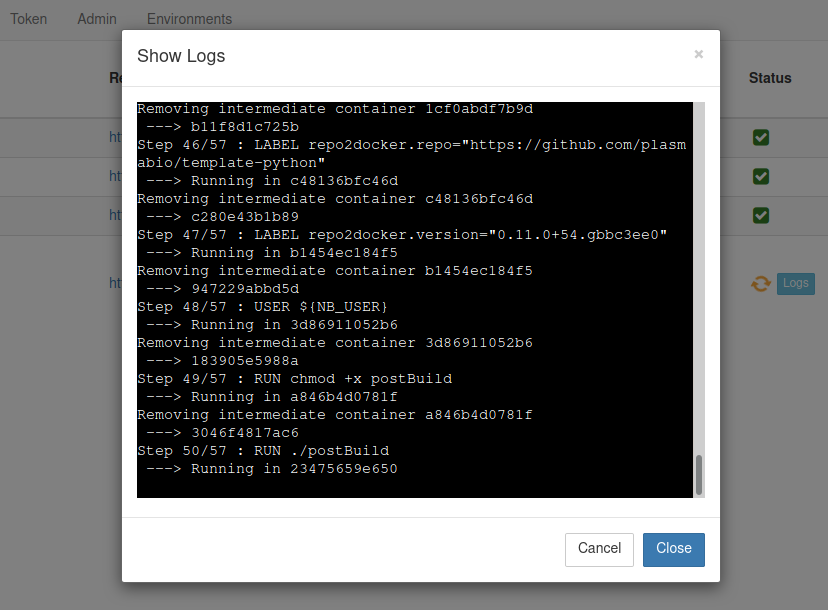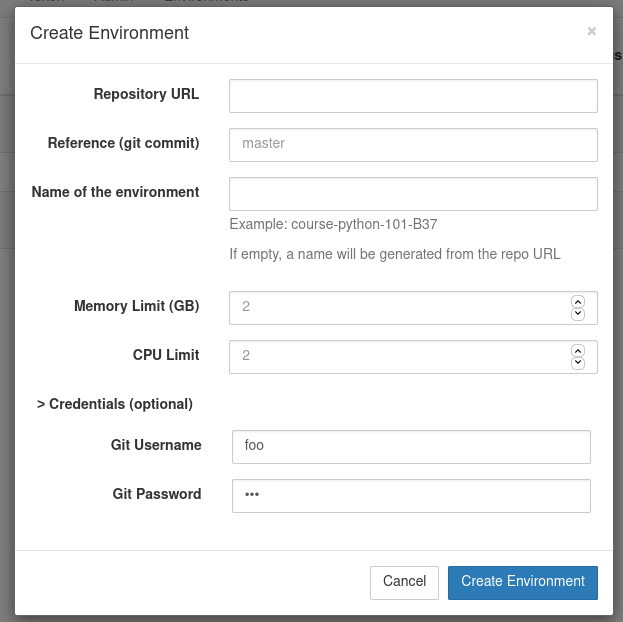TLJH plugin to build and use Docker images as user environments. The Docker images are built using repo2docker.
During the TLJH installation process, use the following post-installation script:
#!/bin/bash
# install Docker
sudo apt update && sudo apt install -y apt-transport-https ca-certificates curl software-properties-common
curl -fsSL https://download.docker.com/linux/ubuntu/gpg | sudo apt-key add -
sudo add-apt-repository -y "deb [arch=amd64] https://download.docker.com/linux/ubuntu bionic stable"
sudo apt update && sudo apt install -y docker-ce
curl -sL https://deb.nodesource.com/setup_14.x | sudo -E bash -
sudo apt update && sudo apt install -y nodejs libfuse-dev python3-dev libcurl4-openssl-dev libssl-dev
sudo modprobe fuse
# pull the repo2docker image
sudo docker pull gcr.io/nii-ap-ops/repo2docker:20220330
sudo docker pull gcr.io/nii-ap-ops/rdmfs:20211221
# install TLJH
curl https://raw.githubusercontent.com/jupyterhub/the-littlest-jupyterhub/master/bootstrap/bootstrap.py \
| sudo python3 - \
--admin test:test \
--plugin git+https://github.com/RCOSDP/CS-tljh-repo2docker.git@master
# fix to use the RCOSDP's one as binderhub package.
sudo /opt/tljh/hub/bin/python -m pip install --upgrade git+https://github.com/RCOSDP/CS-binderhub.git
# restart TLJH
sudo systemctl restart jupyterhubRefer to The Littlest JupyterHub documentation for more info on installing TLJH plugins.
The Environments page shows the list of built environments, as well as the ones currently being built:
Just like on Binder, new environments can be added by clicking on the Add New button and providing a URL to the repository. Optional names, memory, and CPU limits can also be set for the environment:
Clicking on the Logs button will open a new dialog with the build logs:
Once ready, the environments can be selected from the JupyterHub spawn page:
tljh-repo2docker also supports building environments from private repositories.
It is possible to provide the username and password in the Credentials section of the form:
On GitHub and GitLab, a user might have to first create an access token with read access to use as the password:
tljh-repo2docker is currently developed as part of the Plasma project.
See the Plasma documentation on user environments for more info.
See: https://repo2docker.readthedocs.io/en/latest/howto/jupyterhub_images.html
Check out the instructions in CONTRIBUTING.md to setup a local environment.





